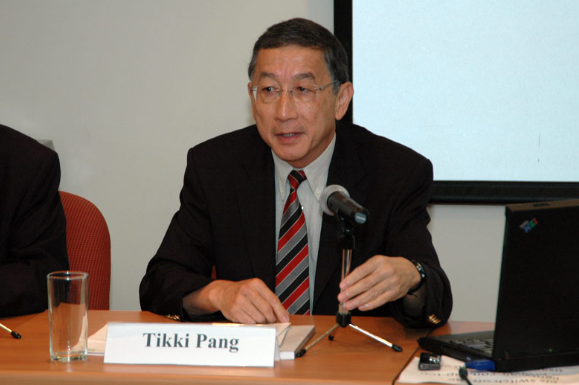A former World Health Organization (WHO) director has renewed calls for urgent action on tobacco harm reduction in the Asia-Pacific, the region with the highest smoking prevalence in the world.
Professor Tikki Pang, senior global health consultant at the Center for Healthcare Policy and Reform Studies in Jakarta and former Director of Research Policy and Cooperation at the WHO, delivered the appeal during a webinar organized by the Asia Forum on Nicotine (AFN) on August 17. The event, titled “The WHO FCTC, 20 years on,” examined two decades of global tobacco control under the WHO Framework Convention on Tobacco Control (FCTC) and considered the future role of harm reduction.
Nancy Loucas, executive coordinator of the Coalition of Asia-Pacific Tobacco Harm Reduction Advocates (CAPHRA), pointed to the region’s overwhelming share of global tobacco users. “The fact is that Asia-Pacific, specifically Asia, has the highest number of global tobacco users. The number is staggering. It is 781 million people. That represents 63 percent of the global total of people who use tobacco,” she said.
Loucas also criticized the provisional agenda of the upcoming FCTC conference in November, arguing that it wrongly dismisses harm reduction as an idea pushed by the tobacco industry.
In his remarks, Pang underscored what he called a critical gap in the implementation of the FCTC. “Despite the fact that Article 1 of the convention implicitly includes harm reduction as a component of tobacco control, there is a failure to acknowledge and support the use of safer alternative tobacco products as an important strategy and tool to end smoking,” he said.
Pang further contended that the WHO’s current approach contradicts available scientific data. “Despite the overwhelming evidence of the safety, efficacy and cost-effectiveness of these products, and the fact that 130 million people are actually using these safer alternatives, the WHO, FCTC and the COP have adopted a very strong anti-tobacco harm reduction stance, actually stating that these products are as harmful as combustible cigarettes and calling on its member states to ban them and actually giving awards to countries which have done so,” he noted.
Although the FCTC, which came into force in 2005, has been widely credited with saving millions of lives, Pang highlighted its shortcomings in addressing the specific challenges in Asia-Pacific. “The Asia-Pacific region bears a very significant burden of these harmful effects of smoking,” he said.
Rather than waiting for the WHO to shift its stance, Pang encouraged advocates to push forward through new partnerships. He recommended building evidence-driven coalitions that bring together producers, consumers, and investors, citing the International Federation of Pharmaceutical Manufacturers and Associations (IFPMA) as a possible model.
“In the years that I’ve become a supporter for tobacco harm reduction, and aside from the overwhelming scientific evidence of its value and benefits to health and smoking, I have been struck by the support the cause has received from many quarters, senior former colleagues at the WHO, highly respected academics and professional societies, physicians on the front lines, civil society, consumer groups, and of course, industry,” Pang said.
Reflecting on the growing support, Pang added a perspective from another harm reduction advocate. “Reflecting on that, I sometimes wonder, we can’t all be wrong. The second reflection comes from Alex Wodak in Australia, and I quote Alex, ‘WHO’s position on this issue is now as irrelevant as the position of governments in Eastern Europe and the Soviet Union in the 1980s on the future of central command economies. WHO’s position will collapse at some point, but I don’t know when,” he said.





